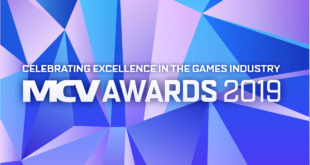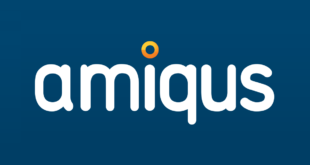Good old Games is the second most popular digital distributor for PC games. Not bad for a service selling retro and back catalogue titles. MD Guillaume Rambourg spoke to MCV about ditching DRM and reeducating publishers..
For those unfamiliar with it, give us the GOG.com history lesson.
GOG is part of CD Projekt, originally founded in the 1990s as a distributor in Poland and other Central European countries. Due to the limited purchasing power of local consumers, back-catalogue games were a natural choice. But rather than just offering an old title, CD Projekt added value with a nice product and technical assistance.
When they realised the potential of digital distribution, the owners created GOG.com in 2008, with one vision: making it the most fair and user-friendly digital distribution platform for old games. This is why all the games on GOG are offered DRM-free and at the same price across the whole globe, bundled with tons of free goodies, remastered for modern Windows operating systems and supported by our technical crew.
We had to work hard to convince publishers that reviving their dustiest PC titles would not take too much of their time and would actually allow them to generate substantial sales. We launched GOG.com in late summer 2008 with Interplay as our first official partner. It allowed us to progressively build up our credibility in the market and many other publishers and developers have followed since then such as Atari, Ubisoft, Activision and EA.
As of today, we cooperate with over 40 partners and distribute more than 350 PC classics. Despite being aimed at a niche audience, GOG.com has become the second most popular digital distribution platform for gamers if you check websites such as Alexa or Compete, or more simply comments from gamers all around the web. Steam is obviously competing in another league here, both in terms of scale and target market.
Still, our niche is comfortable and shields us from the competition, which allows us to keep on cultivating our singularity and propose a pleasant alternative to gamers.
How did you build that audience? What keeps them coming back?
We are talking about old PC games here, so our main competition has always been piracy not other digital platforms. To beat piracy, our offer to gamers had to be both hassle-free and rewarding. If you make the overall experience more troublesome than downloading and playing an illegal copy, then all you can achieve is encouraging users to give piracy a try.
This is why we decided to release all titles without any DRM, as well as making all of them fully compatible with modern operating systems – which is an area where piracy fails to perform. Again, adding technical constraints on such products would only encourage piracy and that’s why we decided to do exactly the opposite.
We reward users by providing them with a fair pricing policy worldwide, tons of free goodies, and by solving their technical problems, rather than sending them back to the rights holders.
Let’s be honest: it is very easy for any gamer to pirate a PC game these days, so the last thing we want to do is to impact loyal gamers. These people should be rewarded for buying PC products in 2011 and beyond, and spread the good message out there. At the end of the day, PC gamers are paying everybody’s wages in the industry and this is why we need to have a win-win situation here. Believe in your users and in exchange they will join forces with you to fight against piracy… as long as your offer is fair and rewarding to them, of course.
How do you convince a publisher like EA to not do the things it thinks it ‘has’ to do to protect its property?
EA classics have been unfortunately heavily pirated over the years and Torrent files or illegal links to Theme Hospital or Theme Park for instance were available easily within a few clicks. We explained to EA how our approach could help them turn invisible losses into visible profits for titles that would be getting dusty otherwise.
For example: rather than wasting time and resources chasing pirates for old PC titles, we decided to convince abandonware websites to become our affiliates. When we sign a title and make it legally available, those websites remove it from their catalogue and instead direct traffic to GOG.com to help us make the back-catalogue segment a viable and clean digital market.
Also, any big publisher such as EA is very busy working on major multi-platform blockbusters and do not necessarily have the resources to monetise old PC titles. I mentioned earlier that GOG’s model very much relies on ease of use, and the same applies to our publishers. GOG’s internal teams are responsible for finding the original game masters, making them compatible with modern operating systems, providing customer support, and so on. We do our best not to take too much time from our partners and rather be an all-in-one solution for them.
Who are GoG gamers?
The core active audience is unsurprisingly made up of nostalgic retro gamers who are in their thirties. These faithful users even act as a PR army for us – they vocally champion classic gaming and spread the word.The big surprise lies in the fact that a huge portion of users are young gamers aged under 18. They never had the chance to play many of our titles as they were either too young or not even born yet.

 MCV/DEVELOP News, events, research and jobs from the games industry
MCV/DEVELOP News, events, research and jobs from the games industry



